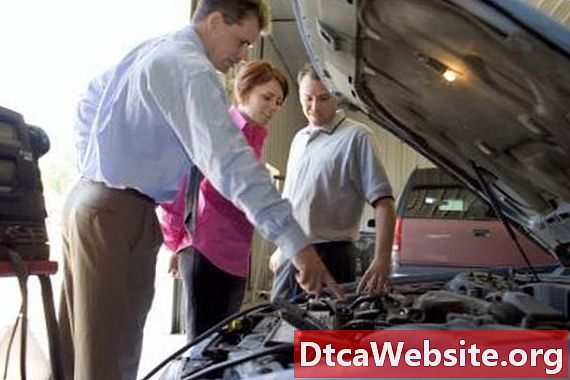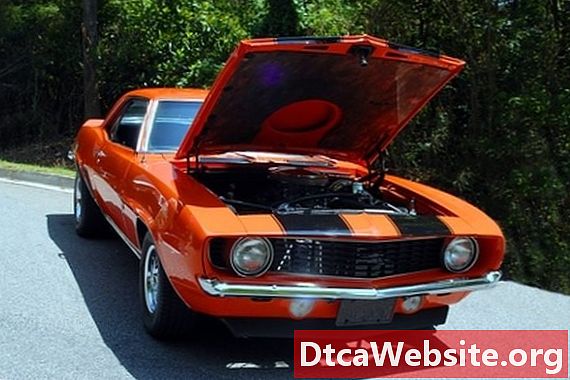
Contenu

The 350-cubic inch Chevrolet engine is one of the most popular and numerous engines ever produced. With its relative light weight and plentiful aftermarket performance parts availability, it is not uncommon to perform upgrades resulting in greater than 400 horsepower. In fact, in competition configurations, this engine platform can achieve well over 1.5 horsepower per cubic inch. The entire combination of parts needs to complement one another, but the "top-end" (cylinder heads, camshaft timing and intake and exhaust systems) is the key to power production.
Short Block Preparation
Step 1
Verify that the lower part of the engine is suitable to handle increased power outputs. Factory 350 CI engines are commonly designed to produce up to 300 or more horsepower. Higher performance versions of factory engines in models such as the Corvette and Camaro typically have the highest-rated engines, and can be good "models" for the foundation of a high performance engine.
Step 2
Contact a reputable engine machinist for information on required machine services to ensure the block and internal components are suitable for the increased output. While a completely stock lower end (short block) can be sufficient, the factory components may not be strong enough for sustained performance at higher power levels.
Determine that the short block has proper clearances. Higher output is usually attained at greater RPMs, and correct internal specifications and clearances ensure longevity at higher engine speeds. While many 350 CI engines can easily produce 400 or more horsepower, there are some internal parts that are prone to failure, such as connecting rod bolts. Along with proper machining and clearances, a rod bolt upgrade can be an inexpensive modification to help prevent this common failure.
Air Induction System
Step 1
Select a set of cylinder heads designed to meet the intended application. Even GMs high performance castings from the late 60s and 70s do not favorably compare to the more recent factory "Vortec" heads. These heads---produced for the late 1990s 5.7L Vortec engine---have airflow characteristics that are better than even heavily modified, early GM castings and can support over 400 horsepower with careful intake/carburetor and camshaft selection. If selecting an aftermarket head, avoid choosing heads with too large of an intake port. This will hinder low RPM performance.
Step 2
Choose a camshaft with valve timing events that will match the intended engine operating range. It is important to refrain from selecting a cam that is too "large"---select one that has a measured effective valve opening duration in the area of 220 to 235 degrees (AT .050 tappet lift) and approximately .480- to .500-inch gross valve lift. Be aware that exceeding .460 lift on the stock Vortec head will require some machining to the valve guide bosses to maintain valve retainer-to-guide boss clearance, but this is a relatively simple and inexpensive machining process. Use the recommended valve springs for the camshaft.
Select an effective intake manifold and carburetor. Again, choose one that is suitable for the intended engine usage. An aftermarket dual-plane manifold with a carburetor in the 600 to 750 CFM range will provide enough airflow for a carefully selected head and cam combination, and should also maintain good street drivability.
Tip
- Many aftermarket parts manufacturers offer pre-matched "top-end kits" which include heads, cam, intake manifold and carburetor and that are a proven combination that will produce 400 or more horsepower. These are a great alternative or can be used as a guide when choosing individual components.
Warning
- Avoid choosing parts that are too "big." Using heads, a camshaft and intake system designed for optimum power in the 3,500 to 7,500 RPM range will not be very easy to drive on the street, but a well thought out 350 CI combination designed to produce power from 2,000 to 6,000 RPM can make 400 reliable horsepower.
Items you will need
- 350 CI Chevy engine
- Aftermarket performance parts


